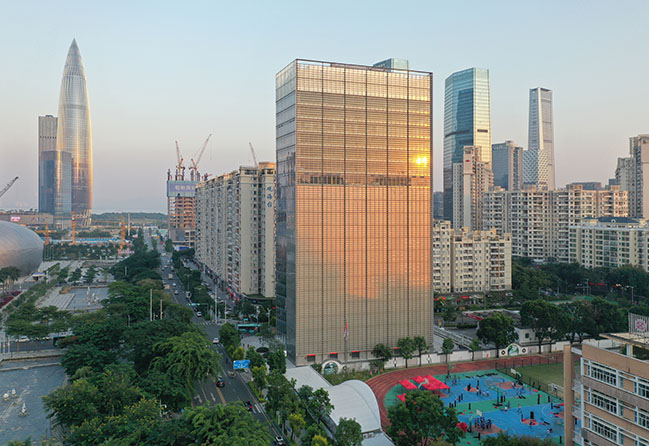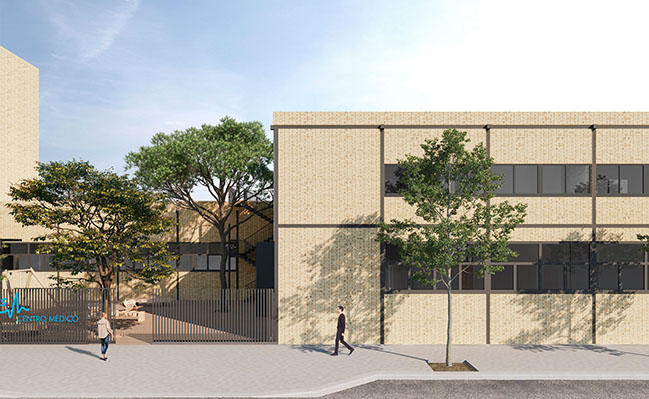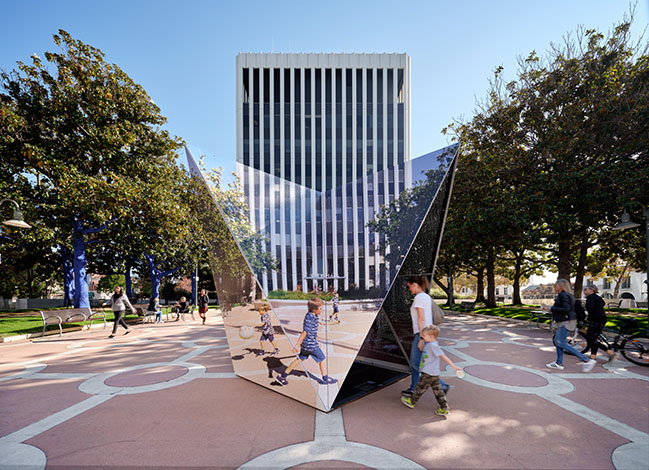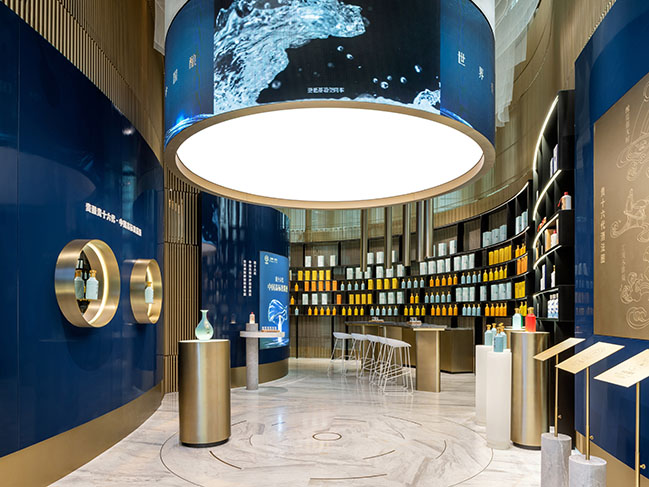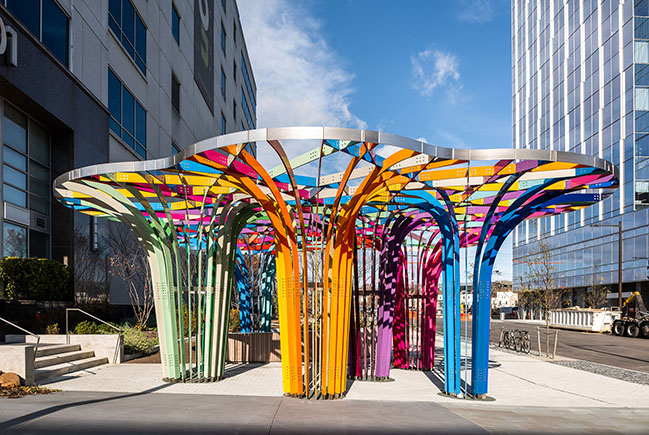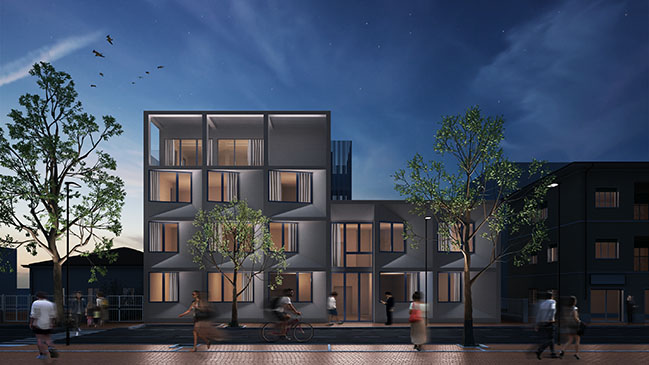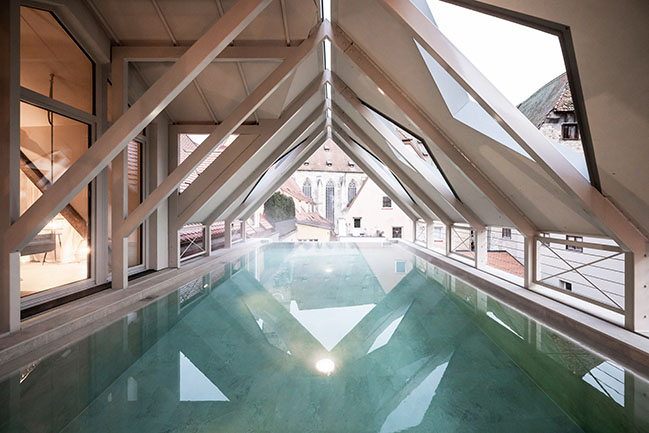12 / 28
2019
The main idea was to rebuild the church’s assembly hall as a multi-functional space, which could be used for different types of non-profit events: lectures, hackathons, presentations, exhibitions and so on...
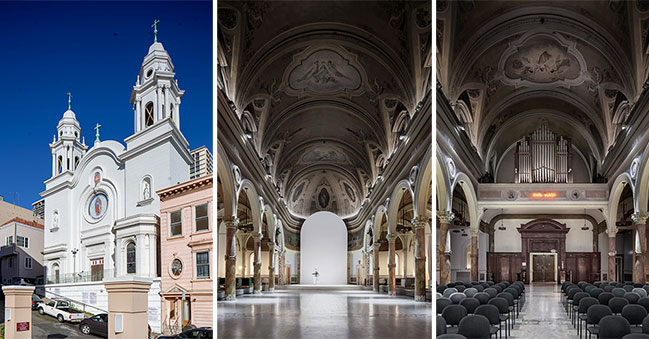
Architect: balbek bureau
Location: San Francisco, USA
Year: 2019
Project area: 1,037.15 sq. m
Project Manager: Olga Svitelska
Team: Slava Balbek, Nataliia Kurylenko, Yevheniia Dubrovskaia, Valerii Stefanov, Andrii Berezynkyi, Anna Kruglova, Elena Kruglova
Photography: Slava Balbek
From the architect: In 2016, our team began designing a multi-functional architectural complex located in a vibrant area of San Francisco, California.
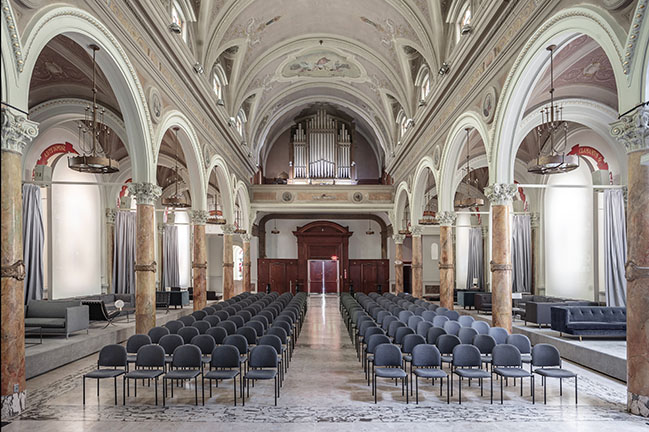
The complex includes a three-level residential building transformed into co-living accommodation, an old church re-equipped as a modern event hall, and a freestanding educational center. A common-area courtyard connects all three units of the complex.
The main idea of the complex was to create a launchpad for the development of young startups, enabling them to live, work, socialize, develop and communicate with like-minded individuals and groups in a single inspirational space. The task was to create a modern educational center in a basement area, with free access from the street. In addition, to re-build the church assembly hall as a multi-functional space, which could be used for different types of events: lectures, hackathons, presentations, exhibitions and so on.

HISTORY AND CONDITION OF THE PROPERTY
Our Lady of Guadalupe Church (Iglesia de Nuestra Senora de Guadalupe) is a historic San Francisco landmark #204 (according to the Mills Act program). Originally completed in 1880, the 1906 earthquake and fire destroyed the former Roman Catholic Church. Later in 1912, the reconstructed landmark was designed by prominent architects Frank T. Shea and John D. Lofquist in the Mission Revival style.
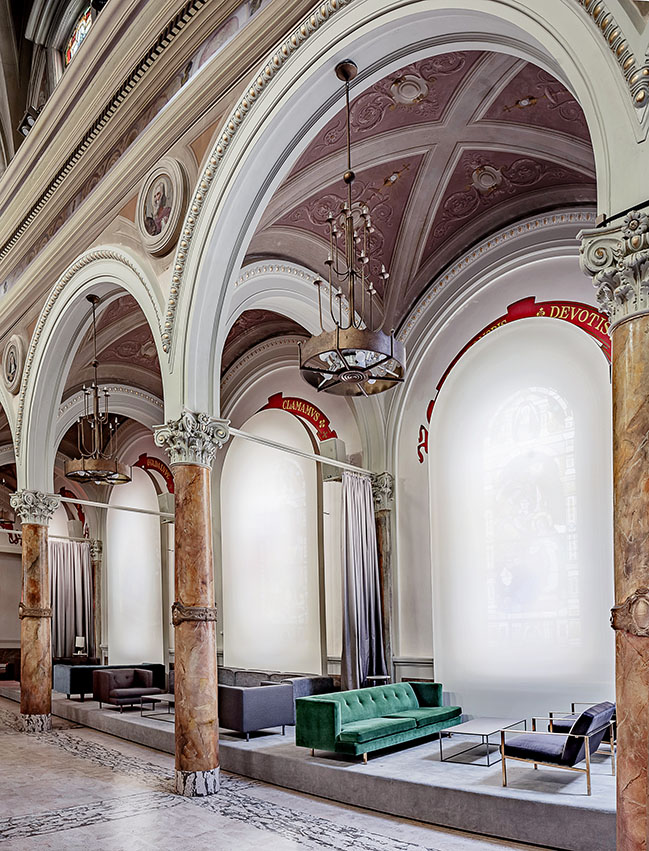
For over 40 years the church was a place of worship for local parishioners. In the 1950s, due to the mass migration of the residents following the construction of the major transportation link, the church suffered a decline in attendance and was subsequently closed in early 1990. For the last 20 years, the church’s semi-basement was kept partitioned off into working units and used as school premises.
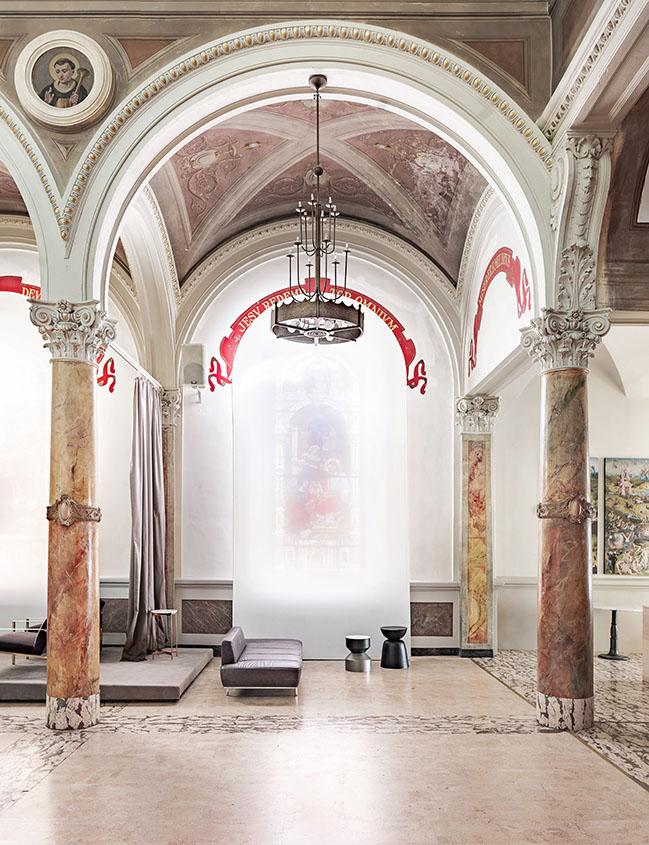
FUNCTIONALITY
When we started working on the design, the ground level of the church already had a pre-determined basic occupant capacity. To uphold it, we proceeded working around existing partitions and wall configurations without changing any of them.
Therefore, we created an adaptable seating arrangement in the central hall, with a seating capacity of up to 200. A number of rooms, adjacent to the hall, were designated as auxiliary facilities.
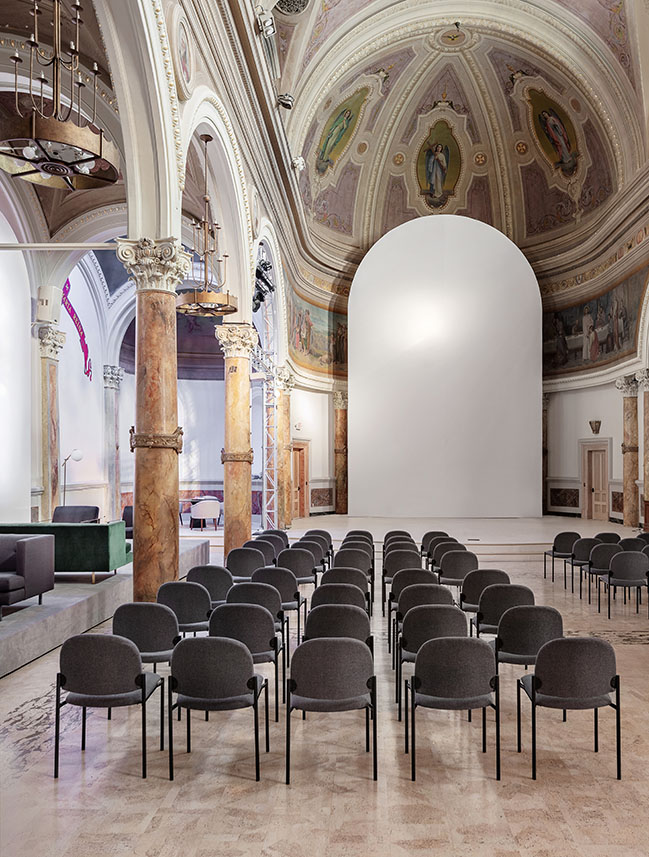
In order to expand the functionality of the premises, we suggested using podium structures with stationary furniture, installed in the left and right wings of the hall. They were setting the tone for the entire space regardless of the type of event currently on.
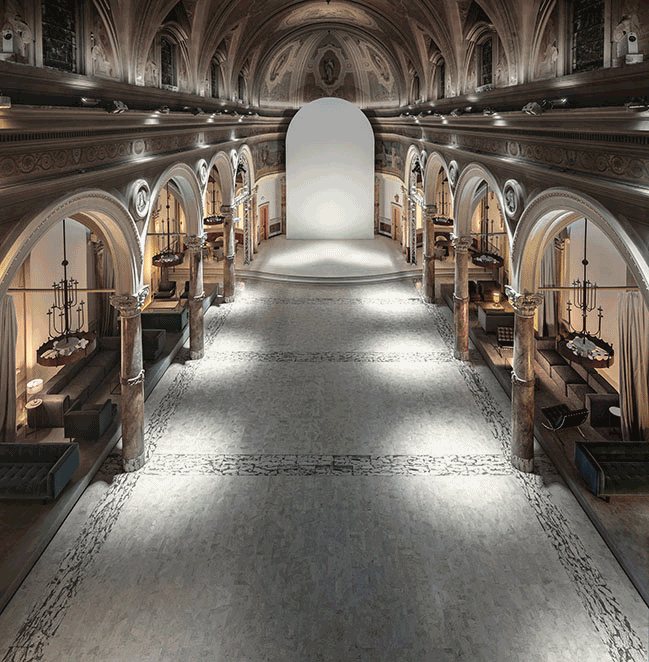
DESIGN
Our first task was to thoroughly analyze and restore all architectural elements according to the historical reference. One of the design requirements was to install most of the elements capable of integration by means of the dry assembly, without disturbing the building envelope.
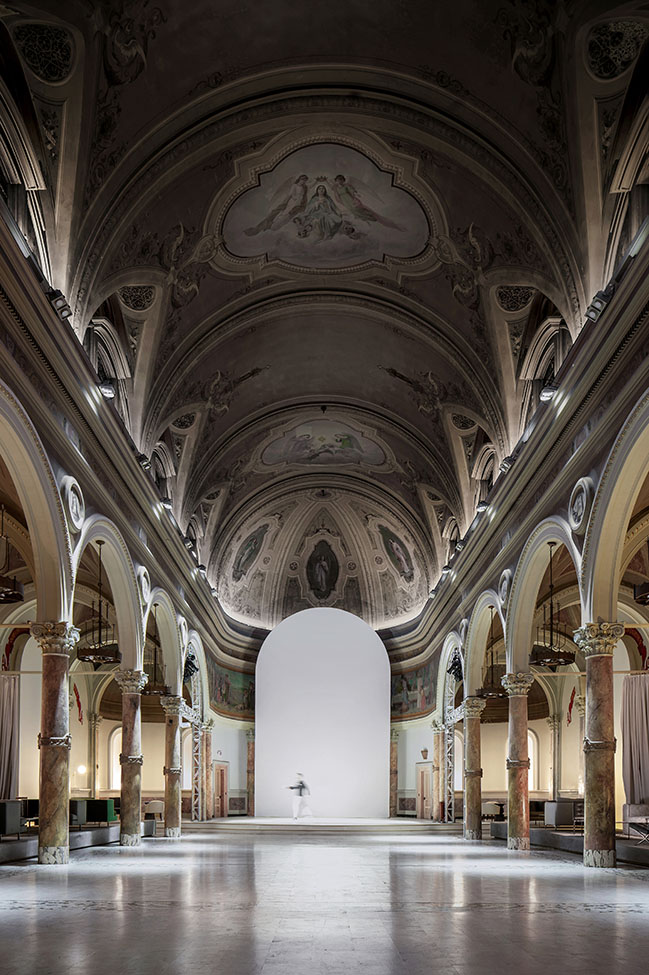
Historical and architectural image of the church was so strong that we decided to use the geometry of modern shapes and elements to emphasize it.
For instance, the 11-meter high screen was installed in the altar area of the church, with the stretched fabric area of approximately 80m2. The screen geometry echoes precisely the radius and proportion of the original naves of the building.
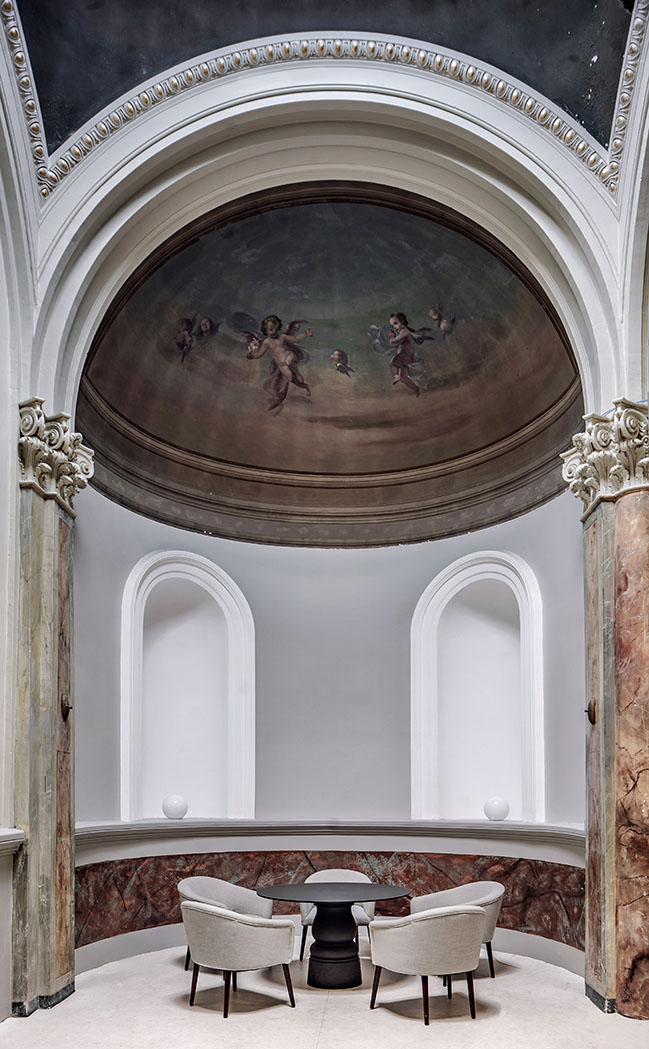
The screen was designed and manufactured according to our specifications for this project. It consists of precast aluminum truss segments mounted on cable extensions. The rear side of the screen is equipped with an ultra-short-throw reverse glow projector, completely hidden from the public’s view.
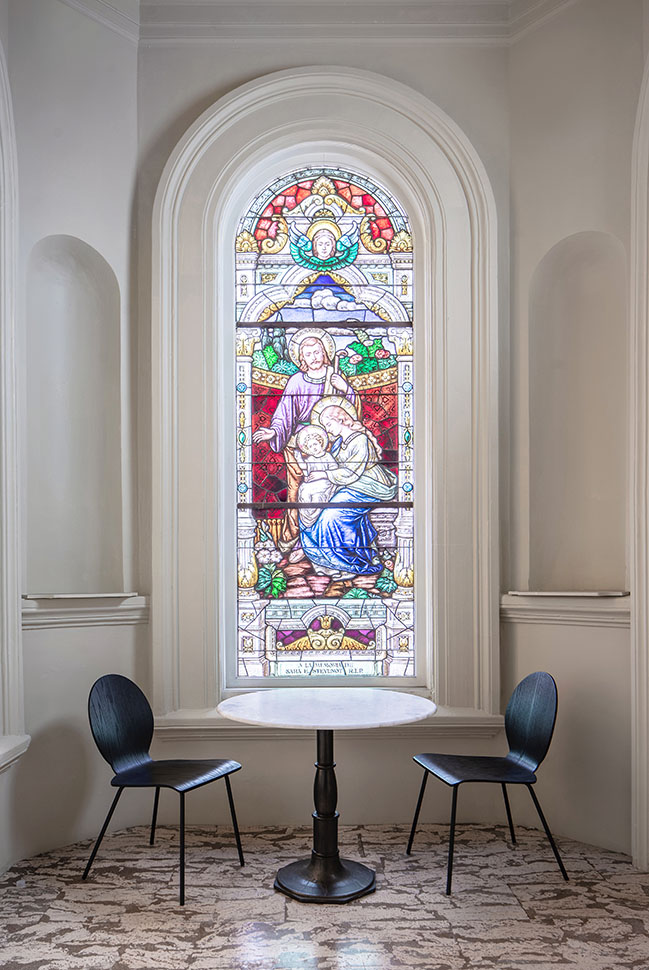
In order to partially conceal religious themes of the stained glass, but still let the daylight into the church, we designed a multi-dimensional frame with translucent material stretched over it. A distinctive feature of this frame is the absence of horizontal braces that prompts an interesting light refraction effect when the light passes through the stained glass, filling the church with colorful rays of light.
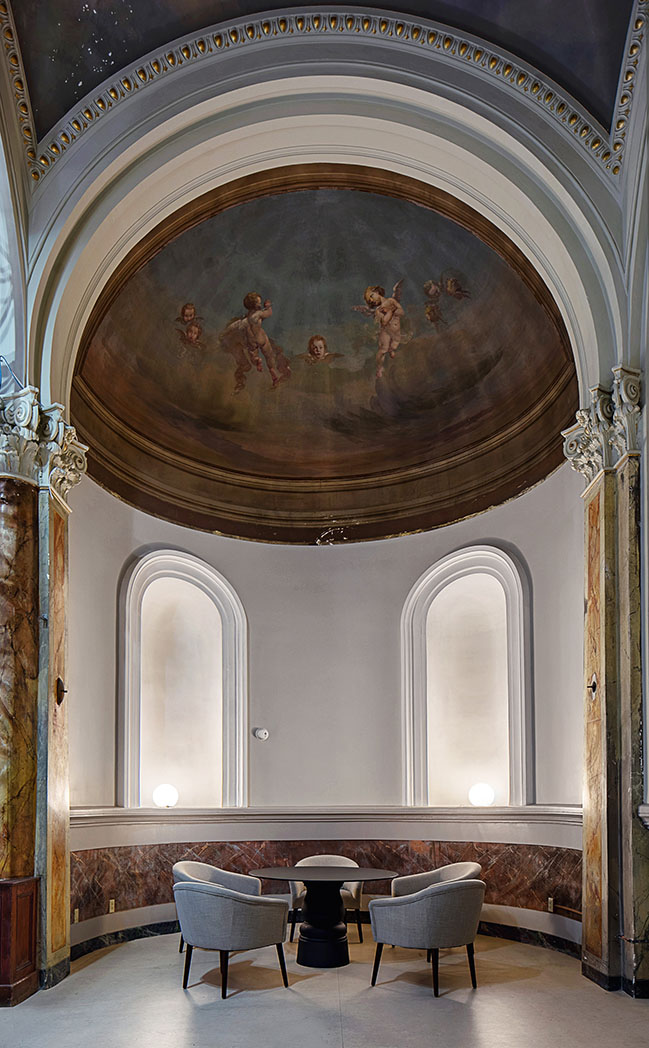
Arched Plane
Frame composition consists of sheet metal and solid wood. Such combination allows maintaining the compressive strength of the frame when the fabric is stretched.
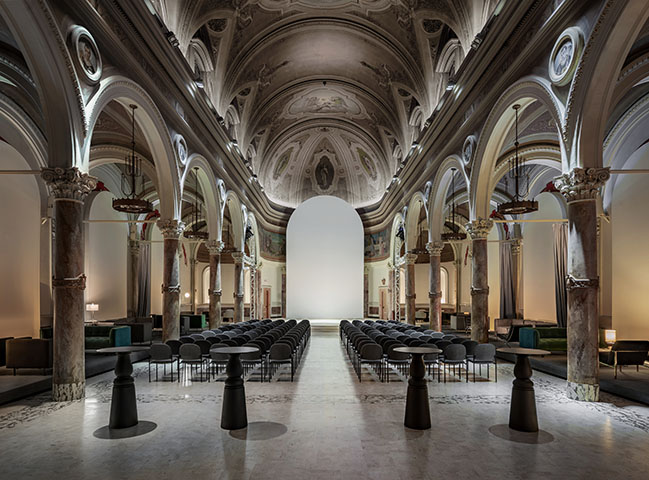
Lighting Variations
Types and patterns of space illumination offer variations to accommodate a wide variety of events. One section of light sources aims to emphasis the architectural image of the venue, while other light sources help to create various theme effects while using general flood or accent lights.
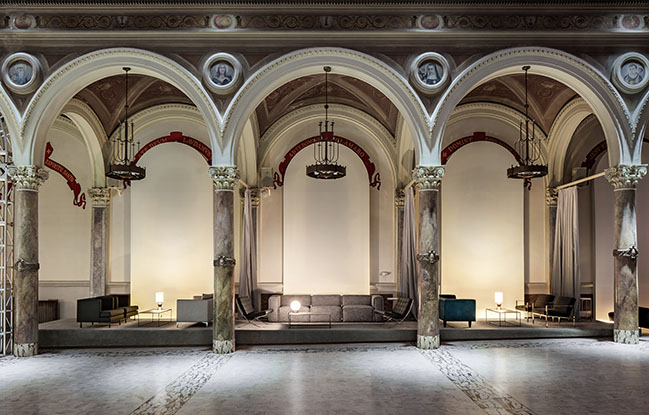
YOU MAY ALSO LIKE: Hong Kong Skyscraper Church by Rocco Design Architects

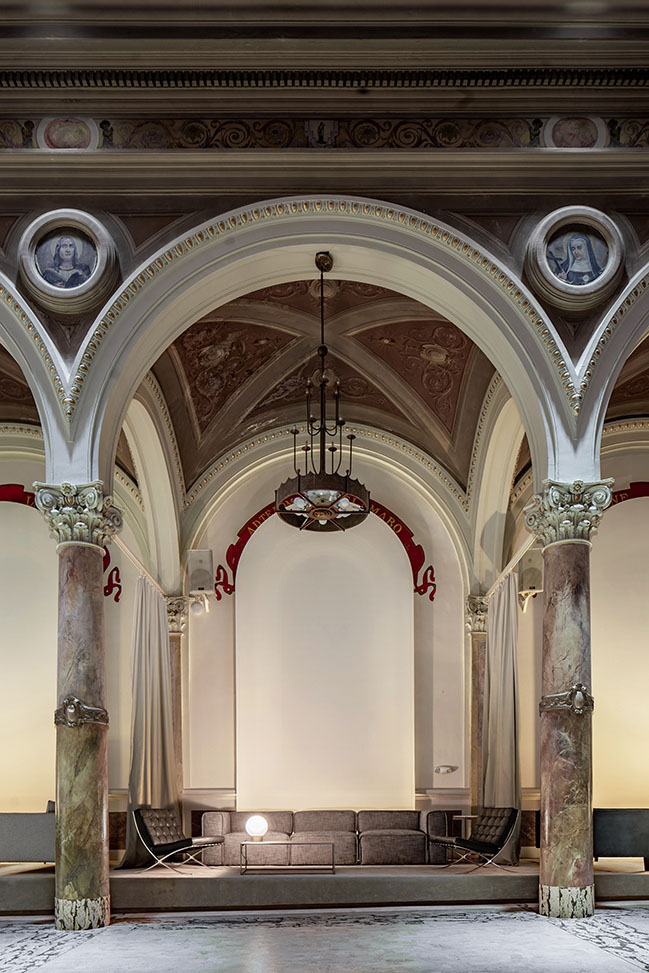
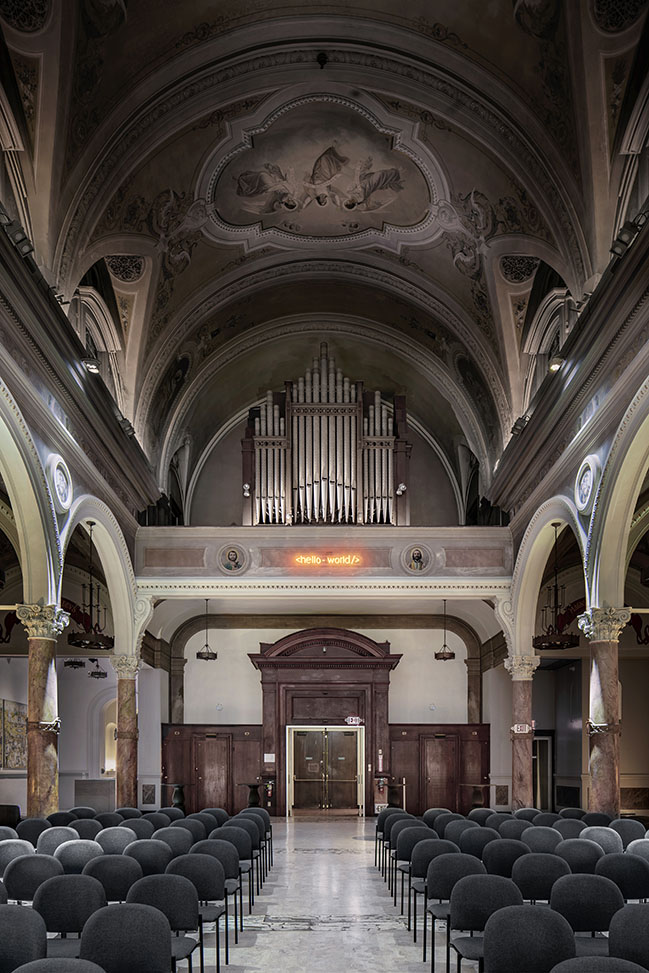
YOU MAY ALSO LIKE: Church of the Penitent Thief by INOUTarchitettura / LADO architetti / LAMBER + LAMBER
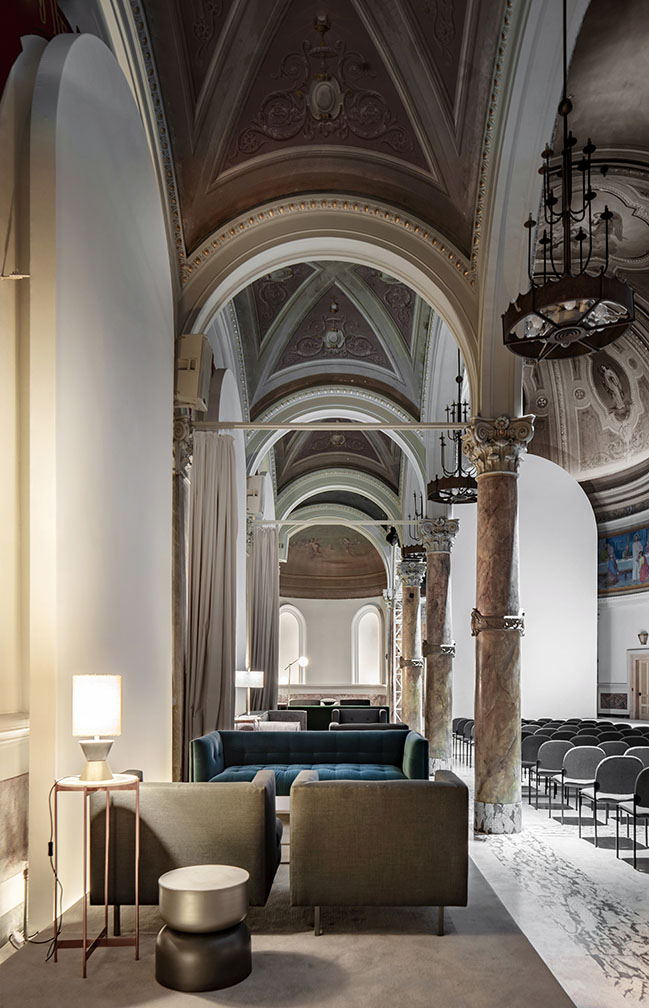
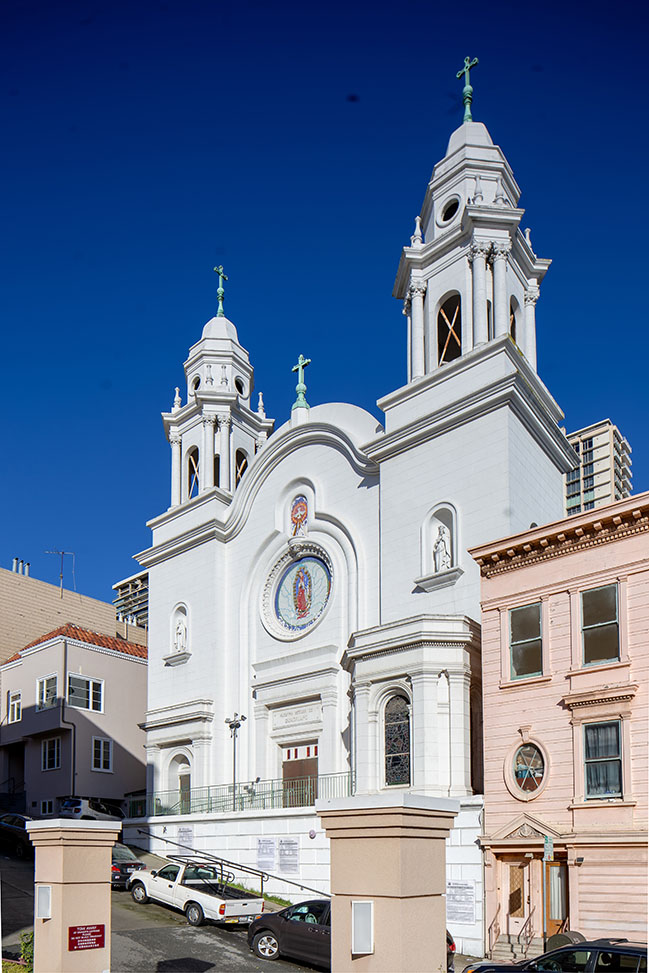
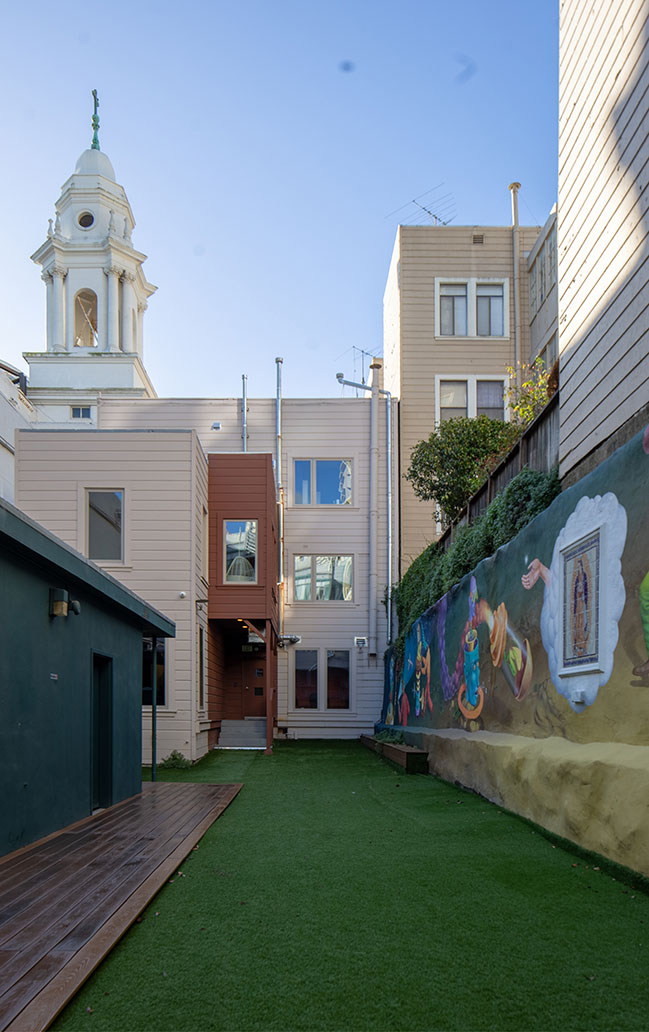
YOU MAY ALSO LIKE: Pullenvale Church in Brisbane by Hogg&Lamb
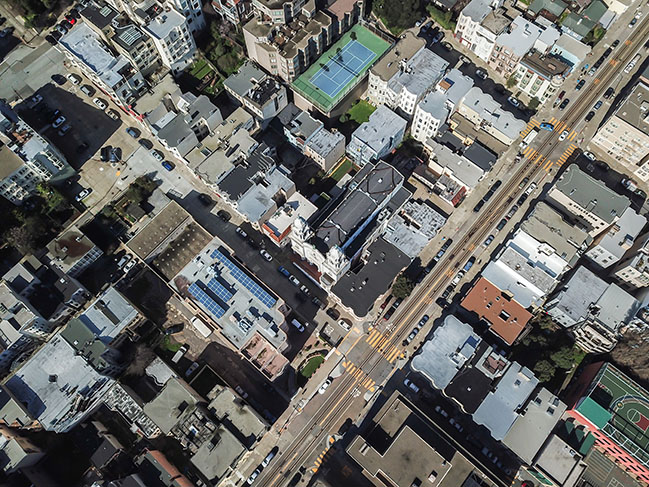
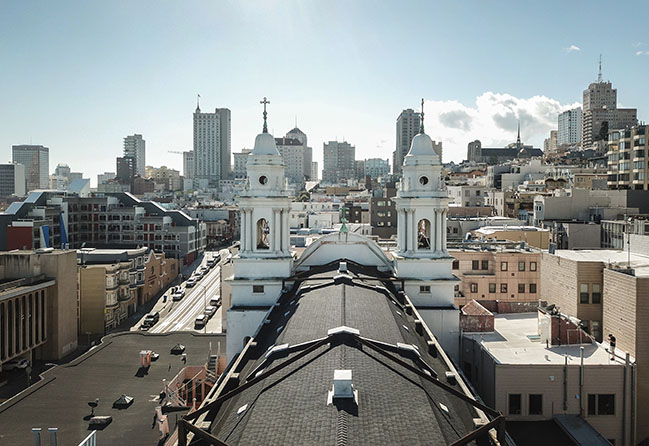
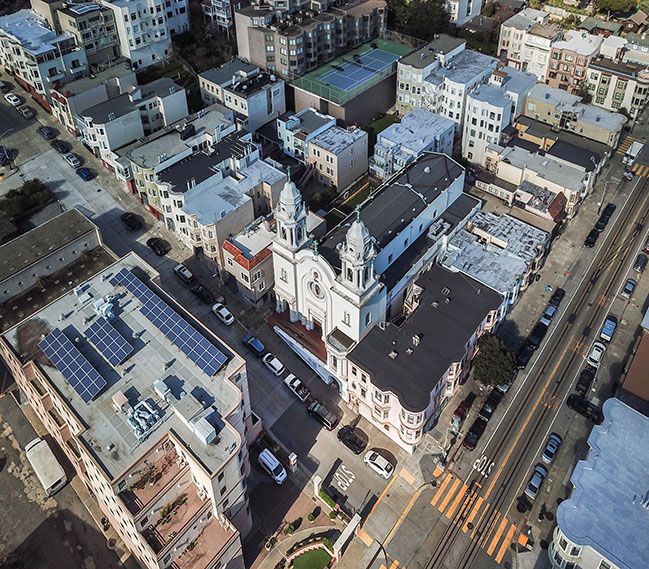
YOU MAY ALSO LIKE: 100 Walls Church by CAZA
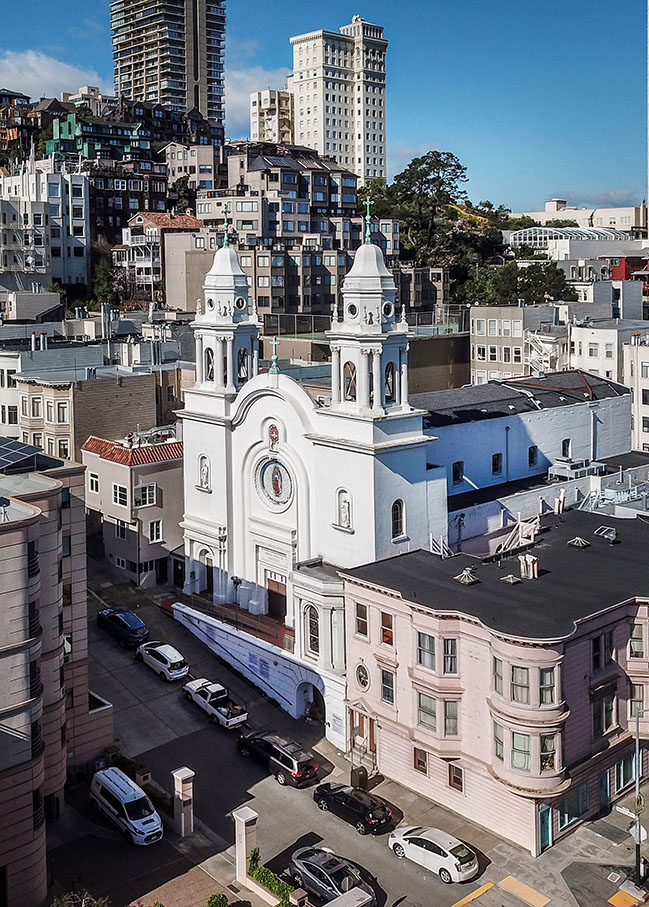
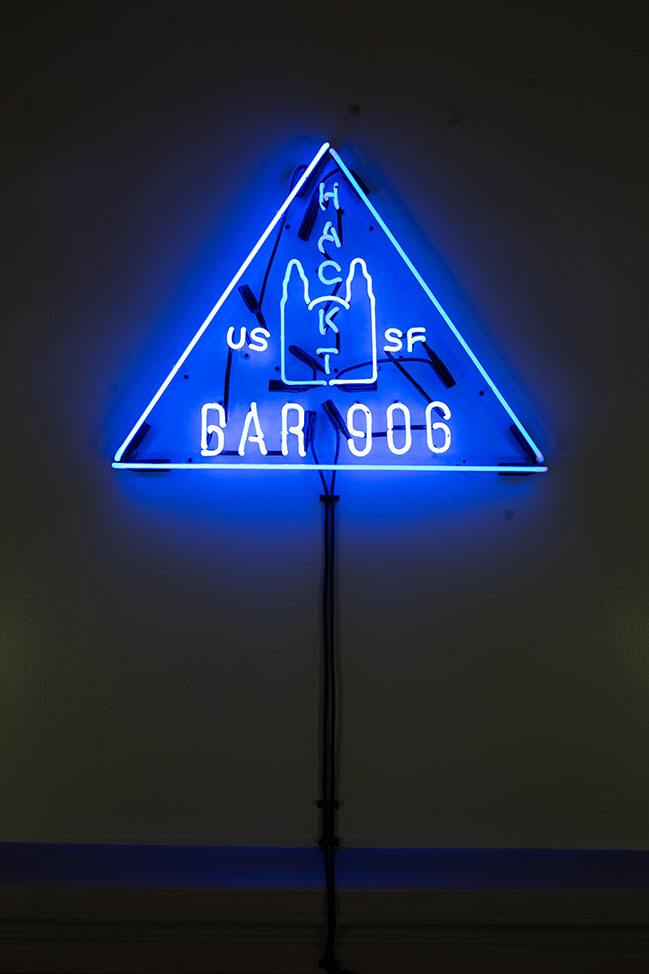

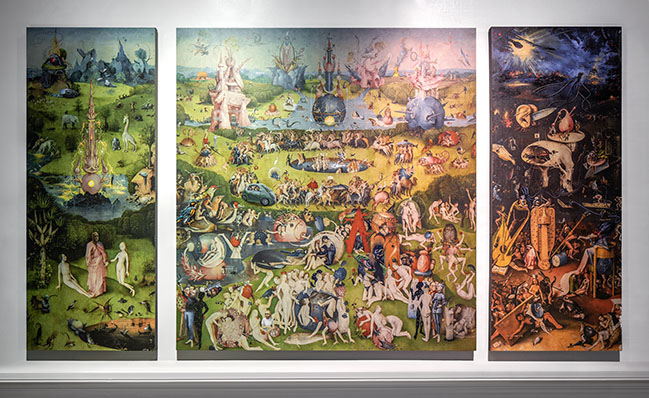
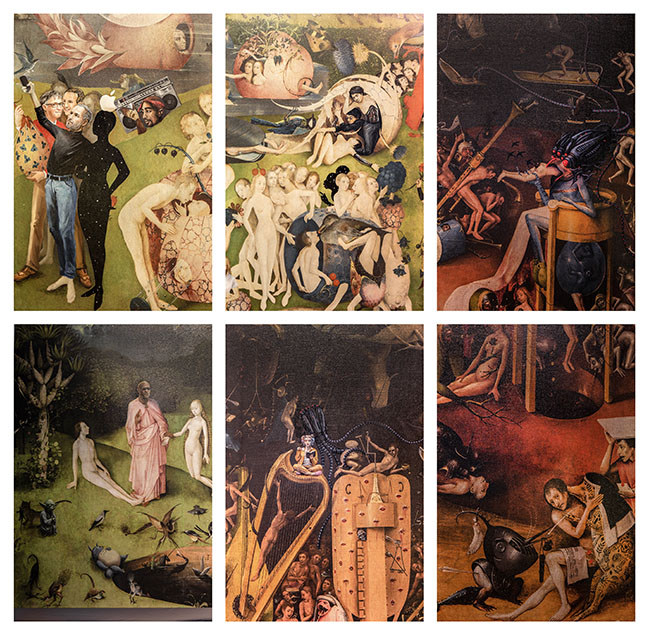

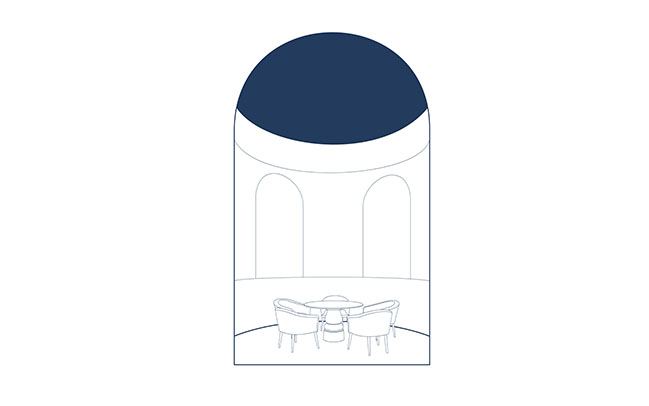
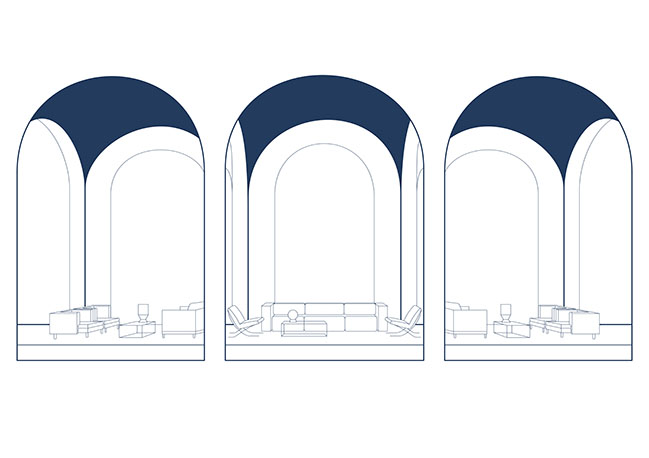
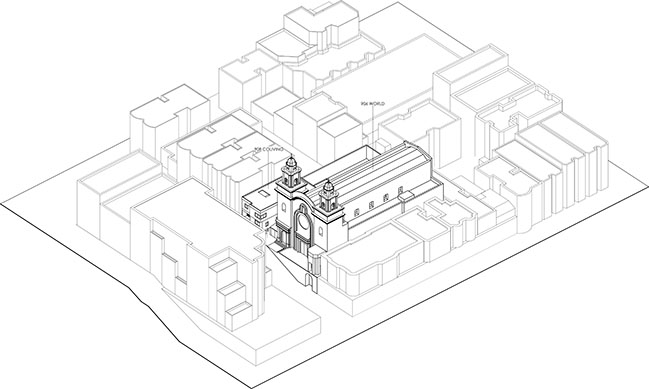
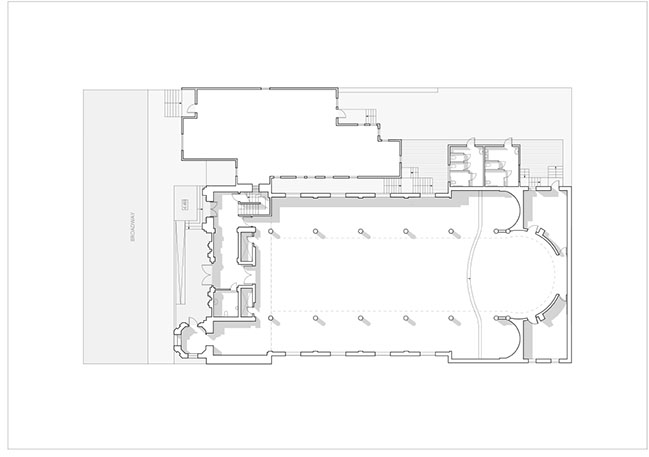
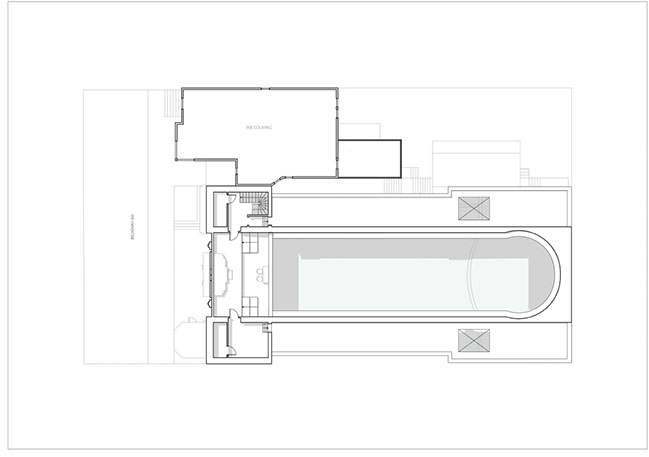
906 World Cultural Center by balbek bureau
12 / 28 / 2019 The main idea was to rebuild the church's assembly hall as a multi-functional space, which could be used for different types of non-profit events...
You might also like:
Recommended post: Golden Rose by noa* | A kaleidoscope of the past
